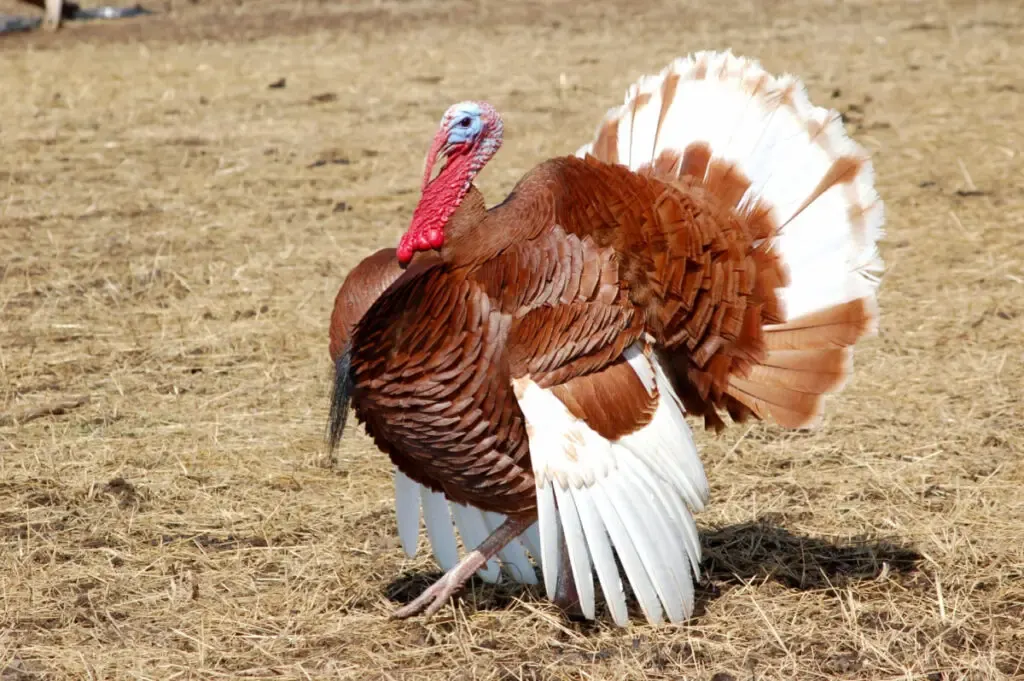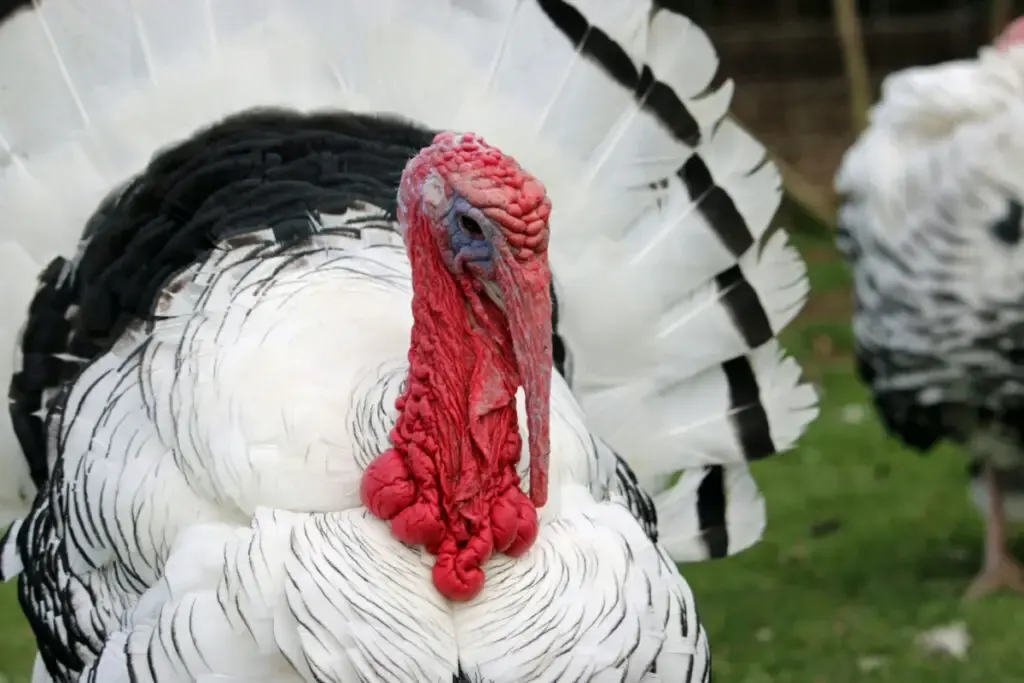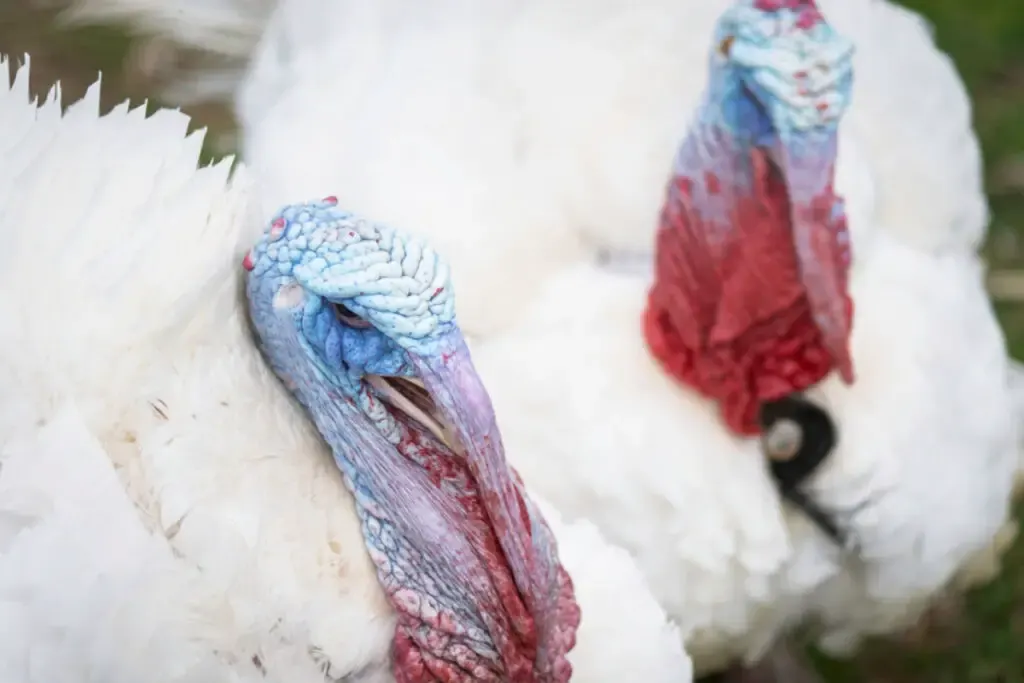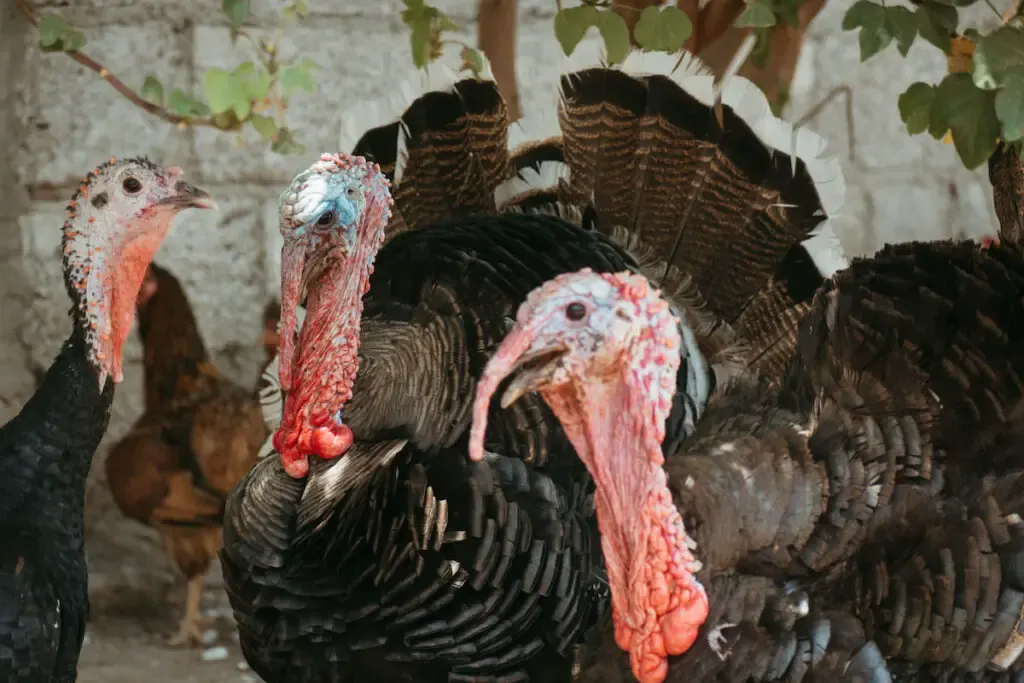Turkeys are primarily raised for meat. But like many other poultry species, they may also be kept for eggs or as pets.
If you decide to rear a turkey, you will surely want to get a breed or variety that suits your purpose best. The same holds if you are trying to raise turkeys for eggs.
On average, turkeys lay around 2-3 eggs per week. So, in a year, one can expect as many as 100 eggs. Of course, there are outliers. Some breeds go over 100 eggs a year, while some fall slightly below.
But in this article, we focus on the best turkey varieties for eggs – those with the highest laying rates.
1. Bourbon Red Turkey

On average, the Bourbon Red offers around 90 to 120 eggs per year. In some cases, the laying rate can even be as high as 160-180 eggs per year.
This turkey breed gets its name from its place of origin – Bourbon County, Kentucky – and its reddish plumage. The Bourbon Red was created in the late 19th century from crossbreeding White Holland, Standard Bronze, and Buff turkeys.
Bourbon Reds are large-sized birds. On average, the toms weigh as much as 33 pounds, while the hens weigh around 18 pounds. So, it is not surprising that they are primarily raised as meat birds.
However, beyond being raised for meat, Bourbon Reds may also be kept for eggs and ornamental purposes.
They may be called Bourbon Reds, but members of this breed have some white feathers too. Their tails have white primary feathers, and the flight feathers are also white.
Bourbon Red turkeys are pretty hardy, and they should do well in most climates. They actively forage and thrive better in a pastoral system.
2. Royal Palm Turkey

With a Royal Palm turkey, you get about 2 eggs per week. And in a year, that amounts to around 100 eggs per year.
Of course, this is far below the laying rate of many ducks and chickens. But for turkeys, the average laying rate of Royal Palms is pretty high.
The Royal Palm turkey originated in the United Kingdom. It did not get to the United States until the 1920s when it got to Florida. The Royal Palm Turkey got its recognition by the APA in 1971 and is currently listed as threatened.
Royal Palm turkeys are primarily raised for exhibition purposes – it is one of the few turkey breeds not raised mainly for meat. But you could also rear them for meat and eggs if you so desire. Interestingly, you can also use Royal Palm turkeys as pest control for insects.
Royal Palms are one of the smaller-sized turkey breeds. So, it is not surprising that they are not primarily meat birds. On average, the toms weigh 16 to 22 pounds. The hens, on the other hand, weigh an average of 10 to 12 pounds.
Generally, Royal Palm toms are non-aggressive, while the hens are excellent mothers. Both male and female Royal Palms are active foragers, and they are pretty good at it. They also fly quite well.
3. Beltsville White Turkey

According to the Vintage Egg Heritage Poultry, Beltsville White turkeys can produce around 150 to 180 large eggs per year. This is one of the highest egg-laying rates you will find amongst turkeys. (source)
Beltsville White Turkeys are a United States turkey breed and were created in 1934. Their development was in response to a desire for small to medium-sized turkeys amongst consumers.
Beltsville White turkeys were created in the USDA’s Beltsville Agricultural Research Center in Maryland. Hence, the breed name. Following its creation in 1934, the breed was recognized by the APA in 1951.
Interestingly, while this breed has been around for many decades, it is still a rare one. In fact, it is currently listed as critical.
The average Beltsville White tom weighs around 17 pounds, while the average hens weigh 9.9 pounds. Even though they are primarily raised for meat, they can also be kept for eggs and ornamental purposes.
As hinted by their name, Beltsville White turkeys have white plumage. Their beard is black, shanks are pinkish-white, and their eyes are brown.
4. Bronze Turkey

With a Bronze turkey, you can get from 75 to 155 eggs per year.
Bronze turkeys originated in North America, where they were created from the crossing between domestic turkeys and eastern wild turkeys. The domestic turkeys used in the crossbreeding were reported to have been imported by European colonists.
Bronze turkeys get their name from their iridescent plumage, which gives off a bronze-like sheen. They are a medium to large-sized breed, and they come in two varieties: Broad Breasted Bronze and Standard Bronze.
While some are unclear about the differences between both varieties of Bronze turkeys, the Broad Breasted Bronze is generally bigger than the Standard Bronze. Then again, the plumage of the Standard Bronze is lighter and shinier than that of the Broad Breasted Bronze.
The average Bronze turkey tom weighs around 25 pounds, with Broad Breasted toms often being larger. The average hens, on the other hand, weigh about 16 pounds. While they are primarily bred for meat, they can also be kept for eggs and ornamental purposes.
Bronze turkeys are incredibly hardy, and the long lifespan of the Standard Bronze variety is proof of their hardiness. They survive in most climates and are generally docile.
5. Midget White Turkey
The Midget White is a breed that offers around 60 to 80 eggs per year. Without a doubt, this falls way below what you can get from ducks and chickens. But turkey eggs are larger than chicken and duck eggs.
The Midget White turkey was created at the start of the 1960s at the University of Massachusetts by Dr. Robert Smyth. The breed came from crossing Royal Palm turkeys and Broad Breasted White turkeys.
The breed was created to meet a demand for smaller versions of the Broad Breasted Turkey. And accordingly, it was named after its small size and white plumage.
Midget White turkeys were thought to be extinct at one point. However, 90 of them were discovered in Alabama in 2014. Even at that, they are currently listed as critical.
As their name indicates, Midget White turkeys are small-sized. While the toms weigh an average of 13 pounds, the females weigh 8 to 10 pounds.
Even with their small size, Midget White turkeys are mainly kept for meat. But they will do okay when raised for eggs or ornamental purposes.
Midget White Turkeys are able to fly very well, especially when they are younger. Therefore, you should be cautious to keep them from escaping. Generally, Midget White turkeys are friendly to humans and pets alike, and they are pretty hardy.
5 Best Turkey Varieties for Eggs
| Breed | Average Egg Production | Place of Origin | Average Weight Range |
| Bourbon Red Turkey | 90 to 120 | Kentucky, USA | 18 to 33 pounds |
| Royal Palm Turkey | 100 | United Kingdom | 10 to 22 pounds |
| Beltsville White Turkey | 150 to 180 | Maryland, USA | 9.9 to 17 pounds |
| Bronze Turkey | 75 to 155 | North America | 16 to 25 pounds |
| Midget White Turkey | 60 to 80 | Massachusetts, USA | 8 to 13 pounds |
Resources
- https://www.thehappychickencoop.com/why-dont-we-eat-turkey-eggs/
- https://alifeofheritage.com/farm-living/do-turkeys-lay-eggs/
- https://alifeofheritage.com/farm-living/turkey-breeds/
- https://morningchores.com/bourbon-red-turkeys
- https://www.onedotstores.com/dehwc/bourbon-red-turkey-egg-production
- https://www.roysfarm.com/bourbon-red-turkey/
- https://chickenmag.com/royal-palm-turkey
- https://www.roysfarm.com/royal-palm-turkey/
- https://thevintageegg.com/product/beltsville-small-white/
- https://www.roysfarm.com/beltsville-small-white-turkey/
- https://livestockconservancy.org/index.php/heritage/internal/beltsville
- https://www.e-g-g-s.ru/en/catalog/kross-bronze-708/
- https://www.roysfarm.com/bronze-turkey/
- https://www.roysfarm.com/midget-white-turkey/

